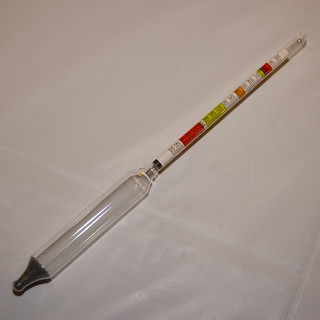
The hydrometer is the testing instrument you’ll use most when making wine. While it looks simple enough it does take some practice to fully understand both how to use it and what it’s telling you.
I’ll show you how to use a hydrometer as well as what the results mean in this three and a half-minute video. You’ll get to actually see the hydrometer used to measure the specific gravity of tap water, a sugar solution, as well as a finished wine so you’ll see the differences.
After the video I’ll share some additional tips on getting the best reading you can from this extremely useful instrument.
Tips on Using the Hydrometer
1. Give the hydrometer a gentle spin as you lower it down into the liquid you’re measuring. This helps shake loose any bubbles that cling to the hydrometer which will affect the reading you get.
2. If your wine is still fermenting you’ll need to take the reading as fast as you can before too many bubbles collect on the hydrometer. You could try shaking your sample vigorously in a test jar in order to degas is.
3. Always remove a sample to test fermented wine. While it is possible to take a reading from the primary fermenter you won’t be at a good viewing angle to get an accurate reading. More importantly the longer you leave your wine uncovered to take the reading the more oxygen you’ll be exposing it to.
4. Be aware of the temperature of your wine when you take your specific gravity reading. These instruments are calibrated to take correct readings at only one temperature. For many hydrometers that is 68 degrees (F). Any warmer or cooler and you’ll need to correct your reading to get the true specific gravity.


5 Replies to “Using a Hydrometer for Making Wine”
Comments are closed.